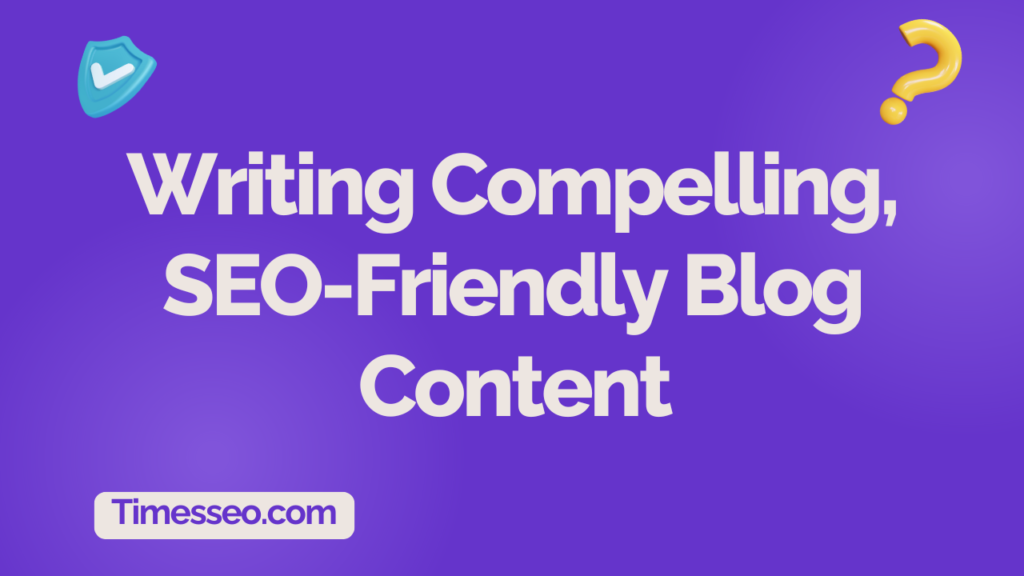
How to Use Blogs to Power Up SEO for Shopify Stores
Unlock the full potential of content marketing with our blog post, “How to Use Blogs to Power Up SEO for Shopify Stores.” Discover how strategic blogging can drive traffic, improve rankings, and enhance visibility for your online store. This guide is packed with practical tips to boost SEO for Shopify stores and turn blog content into a powerful tool for ecommerce success.
Table of Contents
Introduction
Want more traffic to your Shopify store? Here’s a secret weapon: blogging. While product pages do a great job showcasing what you sell, blogs help your store show up in search results before customers are ready to buy. That’s where SEO magic happens—and blogs are the fuel.
Understanding Shopify’s SEO Capabilities
Shopify's SEO: What is it?
Shopify comes with built-in SEO features like customizable title tags, meta descriptions, and automatic sitemap generation. But it’s not perfect.
- Limited control over URL structure
- No direct access to the server or robots.txt
- Basic blogging capabilities (but still powerful when used smartly)
This is why blogging strategically can help you stand out in a competitive eCommerce world.
Why Blogging Helps SEO
Google loves fresh content. Blog entries show that your website is active and providing useful content. Here’s how it helps:
- Targets long-tail keywords your product pages don’
- Increases dwell time and reduces bounce rates
- Provides internal linking opportunities to key product/category pages
- Establishes your store as a niche authority
Choosing the Right Topics
Don’t blog just for the sake of it. Your topics should serve a purpose. Ask:
- What questions are customers asking?
- What problems do my products solve?
- What trends can I capitalize on?
Use tools like AnswerThePublic, Reddit, and Google Trends to dig deeper.
How to Do Keyword Research for Shopify Blogs
You don’t need to be an SEO wizard. Tools like:
- Ubersuggest – for quick keyword ideas
- SEMrush – for competitor analysis
- Google Keyword Planner – for search volume and competition
Pick keywords that reflect search intent and sprinkle in LSI (Latent Semantic Indexing) keywords to stay natural and avoid keyword stuffing.
Structuring Blog Posts for Maximum SEO Impact
Proper formatting helps readers and Google understand your content.
- For the main title, use H1, for parts, use H2, and for sub-points, use H3.
- Write a clear meta title and description that includes your main keyword
- Link to related product pages (e.g., a blog about skincare tips should link to your moisturizer)
On-Page SEO for Blog Content
Every detail counts:
- Optimize image alt tags with keywords
- Use compressed images to improve page speed
- Keep URLs short and readable: yourstore.com/blog/organic-hair-care-tips
- Make sure it’s mobile-friendly—most readers are on phones!
Writing Compelling, SEO-Friendly Blog Content
Great content keeps people reading—and buying.
- Write like you’re talking to a friend
- Tell stories, use examples, and break up big blocks of text
- Use bullet points, lists, and images to keep it skimmable
- Always include a clear CTA (Call to Action)
Adding CTAs in Blogs to Drive Conversions
Use blogs as soft-sell machines:
- Insert product suggestions within the post
- Use banners for limited-time offers
- Add a signup form for your newsletter or giveaway
Make it natural, not salesy.
Updating Old Blog Posts for Better SEO
Don’t let your old blogs collect dust.
- Refresh outdated info and links
- Improve meta titles/descriptions
- Add links to newer products or blogs
- Optimize content length and structure
This lets Google know that your material is still current.
Promoting Your Blog for SEO Benefits
Writing isn’t enough—you need distribution.
- Share on your brand’s social platforms
- Reach out to influencers or communities
- Submit to relevant niche directories or forums
- Repurpose into videos, carousels, or infographics
Leveraging Analytics to Track Blog SEO
Use tools like:
- Google Analytics – to track user behavior
- Search Console – to monitor search performance
Track:
- Which blogs are getting traffic?
- How long do users stay?
- Are they clicking through to product pages?
Then use that insight to write more of what works.
Case Studies: Shopify Stores That Nailed Blogging for SEO
1. GreenAura Skincare:
Posted weekly DIY skincare tips, each blog linked to their own product line. Their organic traffic tripled in just six months.
2. UrbanTee Apparel:
Created trend-focused blogs on streetwear culture. Ranked on Google for multiple long-tail terms and built a loyal following.
Common Mistakes to Avoid
- Keyword stuffing ruins readability and can hurt rankings
- Ignoring blog structure makes content hard to scan
- Publishing and forgetting—you must promote and update
Conclusion
Blogging isn’t optional if you want to drive serious SEO traffic to your Shopify store. It’s the bridge between curiosity and conversion. Use it to share value, educate, and gently nudge your readers to take the next step—buying from you.
Frequently Asked Questions
At least once a week is ideal to build momentum and show Google you're active.
Absolutely. They target long-tail keywords, increase time on site, and boost internal linking.
If you enjoy writing, do it yourself! Otherwise, hire someone to save time and get consistent quality.
Yes, AI tools can assist with drafts and ideas. But always add your human touch for authenticity.
Aim for at least 1,000–1,500 words. Longer posts tend to rank better, as long as they stay valuable and relevant.
Table of Contents
Popular Posts
-
 Affordable Technical SEO Audit for Small Business: A Complete Guide26 Jun 2025 Blog
Affordable Technical SEO Audit for Small Business: A Complete Guide26 Jun 2025 Blog -
 How to Get an Affordable Technical SEO Audit for Small Business27 Jun 2025 Blog
How to Get an Affordable Technical SEO Audit for Small Business27 Jun 2025 Blog -
 The Ultimate Local SEO Audit Checklist for Startups28 Jun 2025 Blog
The Ultimate Local SEO Audit Checklist for Startups28 Jun 2025 Blog -
 Local SEO Audit Checklist for Startups: A Beginner’s Guide28 Jun 2025 Blog
Local SEO Audit Checklist for Startups: A Beginner’s Guide28 Jun 2025 Blog -
 Top On-Page SEO Audit Steps for Service Websites Every Business Should Know29 Jun 2025 Blog
Top On-Page SEO Audit Steps for Service Websites Every Business Should Know29 Jun 2025 Blog -
 Technical SEO for WordPress: The Ultimate Beginner’s Guide01 Jul 2025 Blog
Technical SEO for WordPress: The Ultimate Beginner’s Guide01 Jul 2025 Blog -
 The Impact of On-Page SEO Audit Steps for Service Websites on UX01 Jul 2025 Blog
The Impact of On-Page SEO Audit Steps for Service Websites on UX01 Jul 2025 Blog -
 Technical Mobile SEO Audit Tips for Developers02 Jul 2025 Blog
Technical Mobile SEO Audit Tips for Developers02 Jul 2025 Blog -
 Complete SEO Backlink Audit Guide for Better Google Rankings03 Jul 2025 Blog
Complete SEO Backlink Audit Guide for Better Google Rankings03 Jul 2025 Blog -
 Boost Your Rankings with Technical SEO for WordPress01 Jul 2025 Blog
Boost Your Rankings with Technical SEO for WordPress01 Jul 2025 Blog






